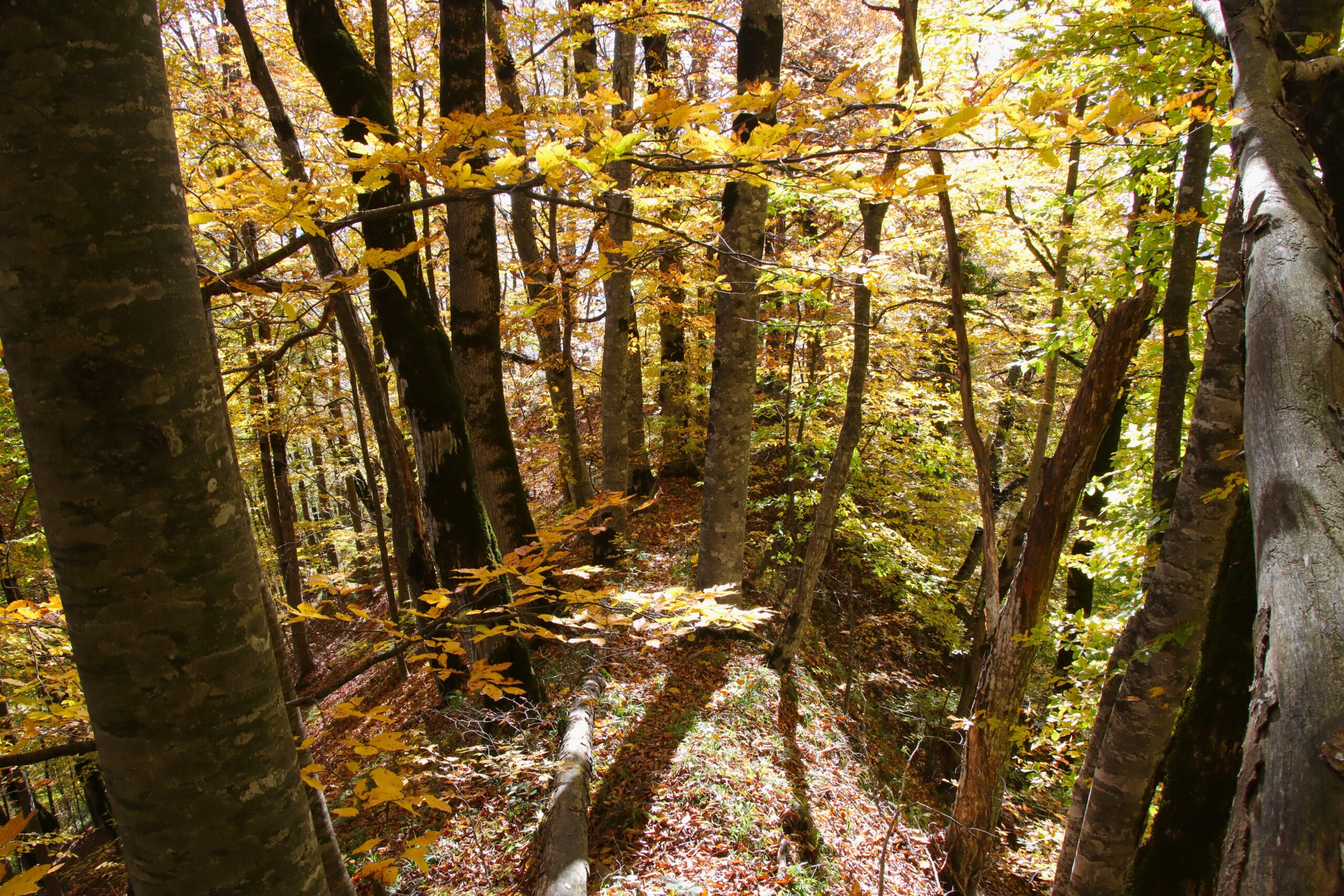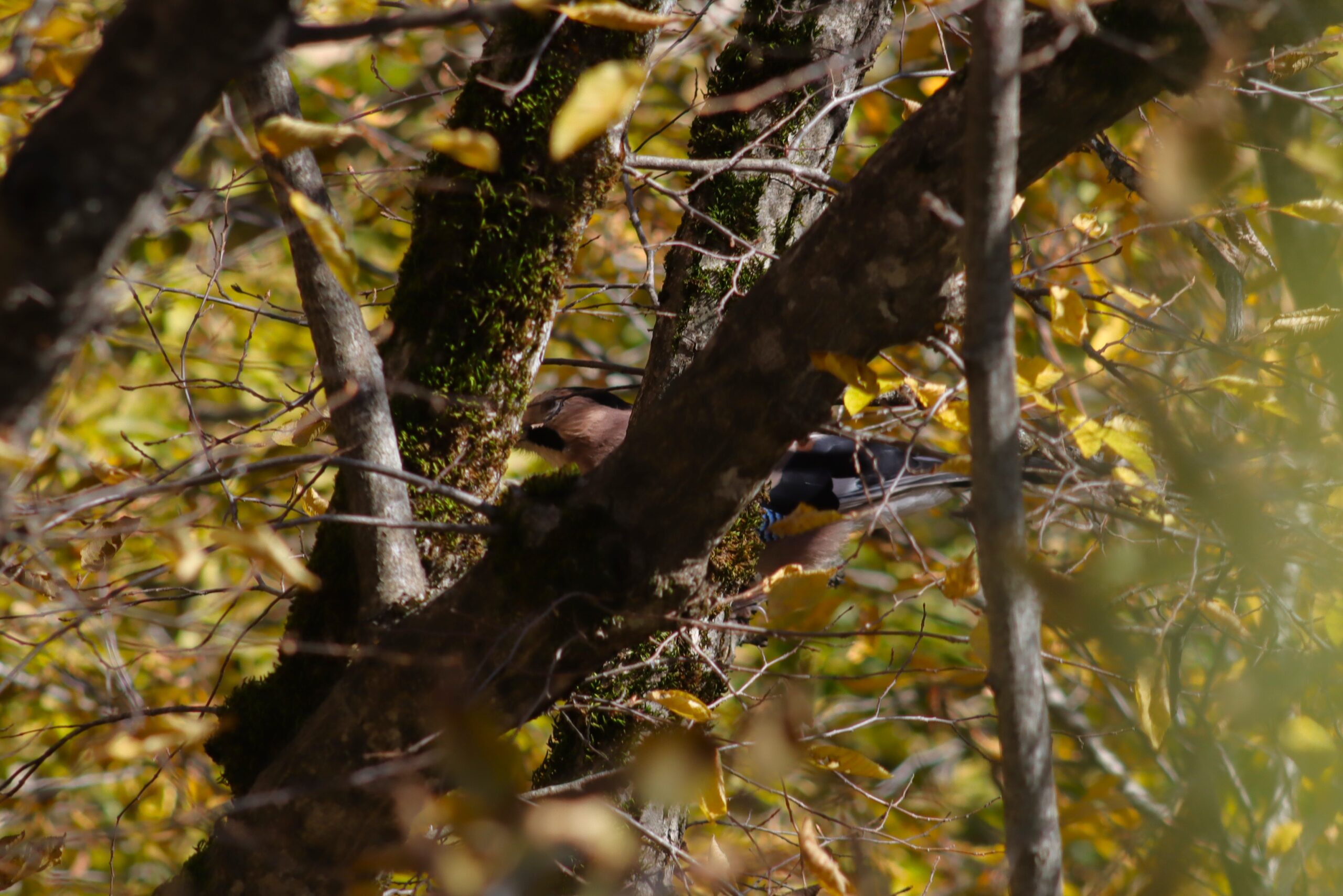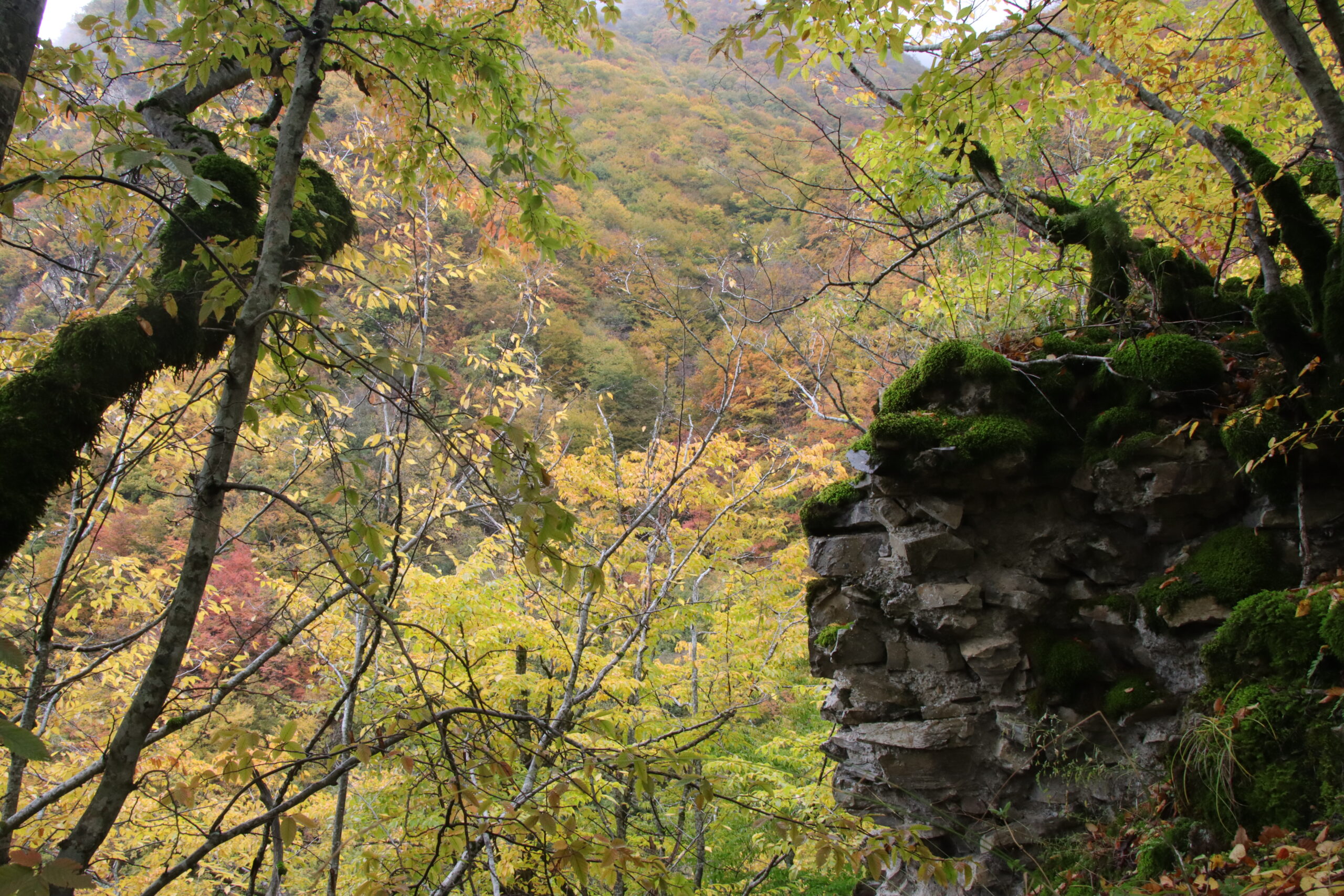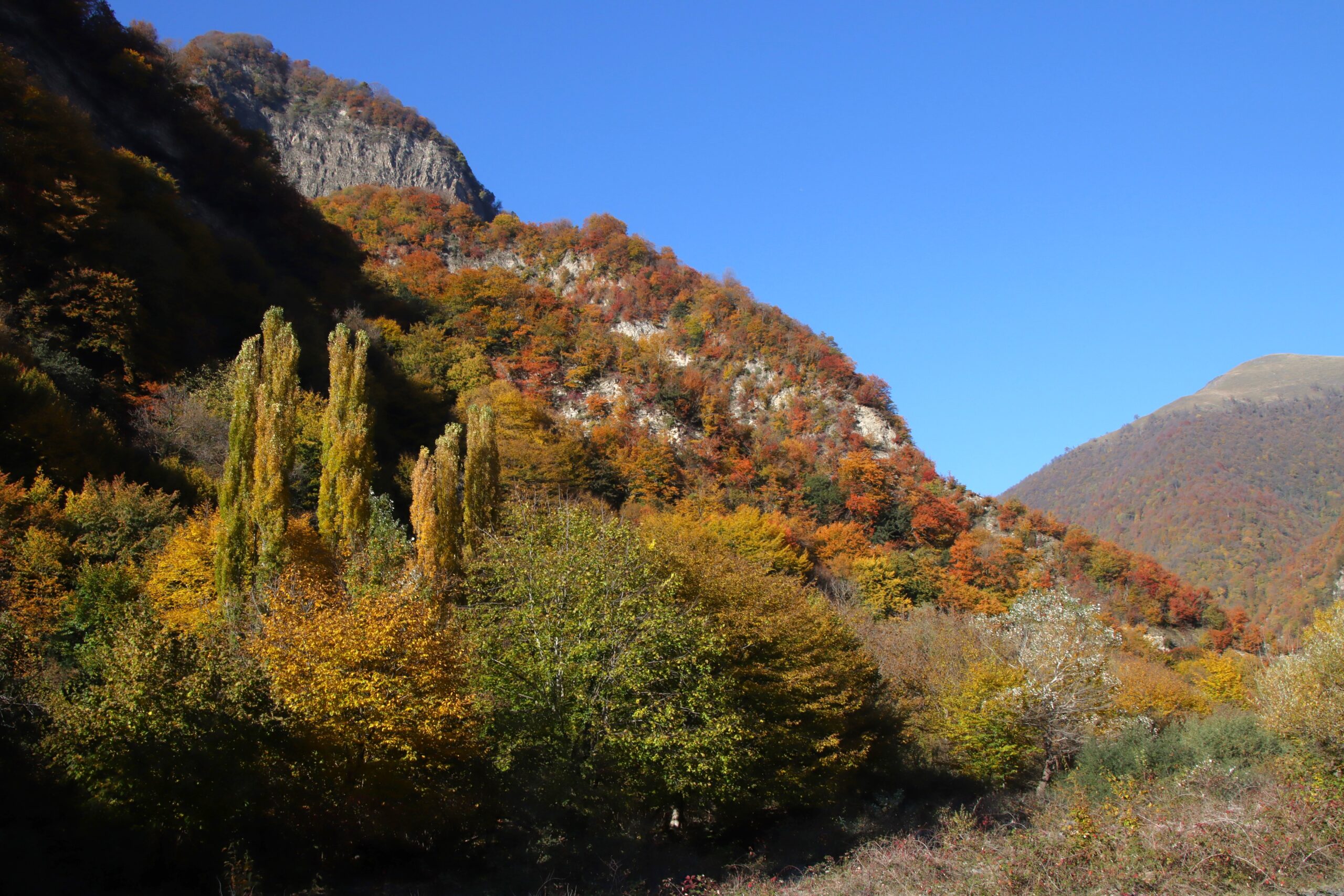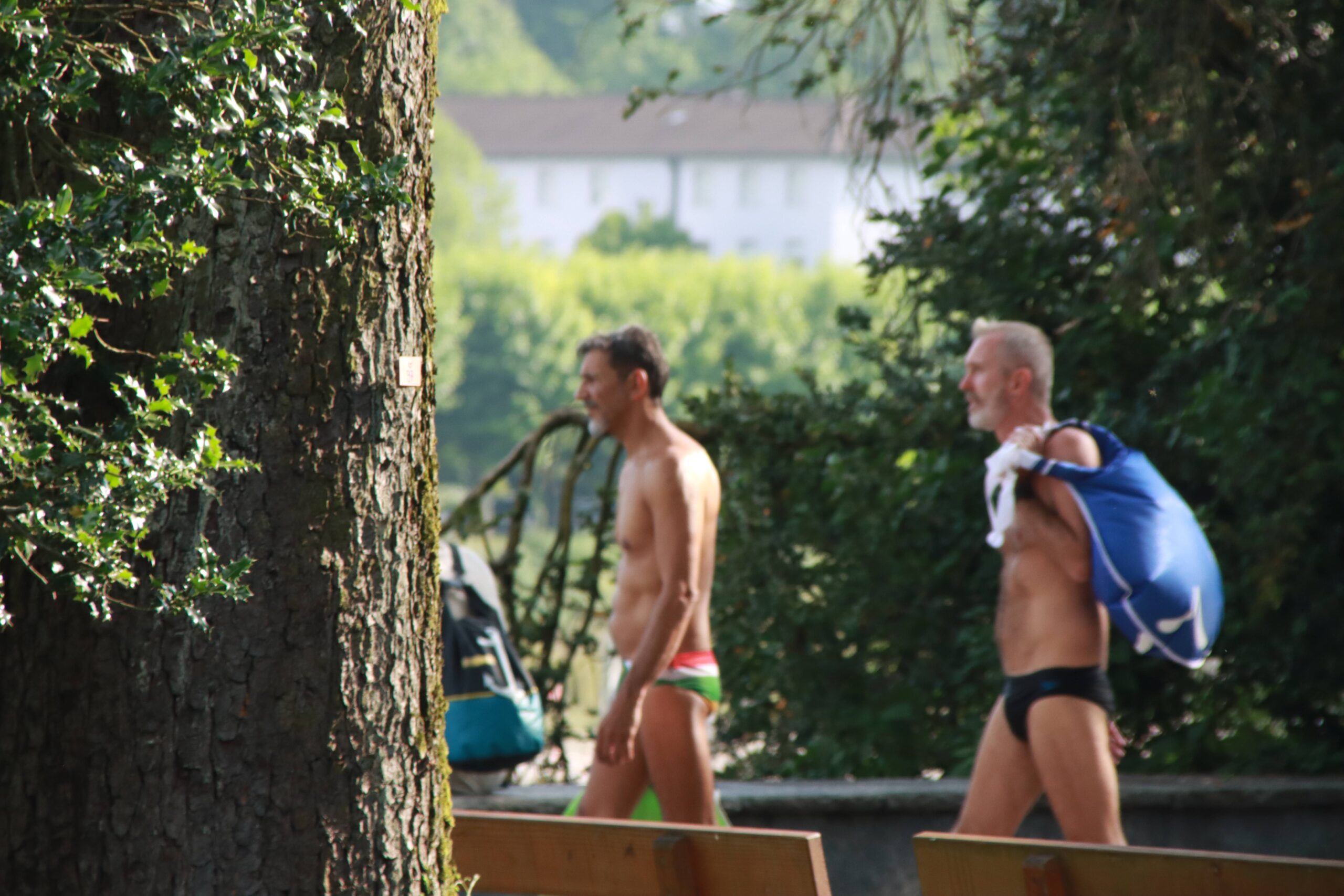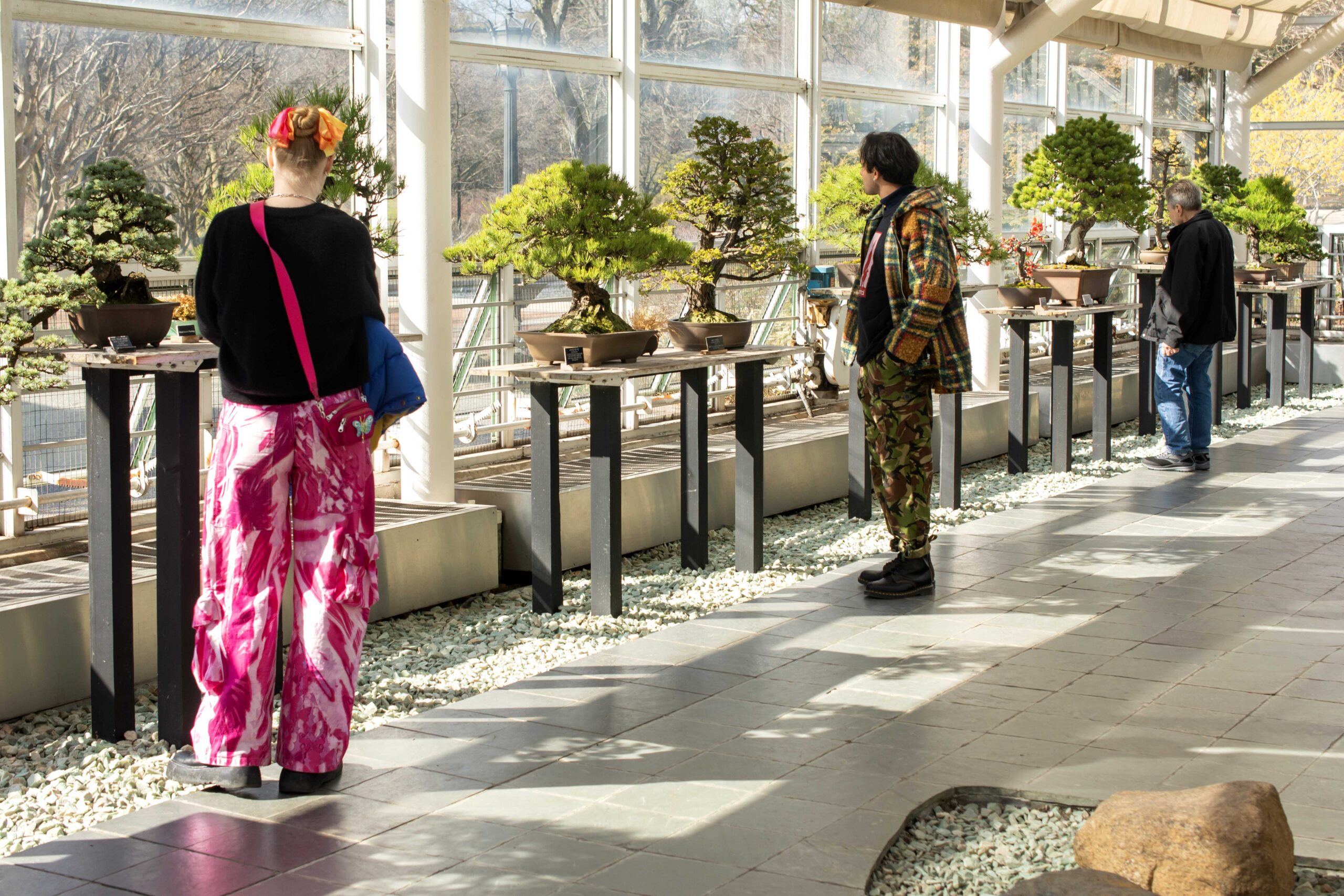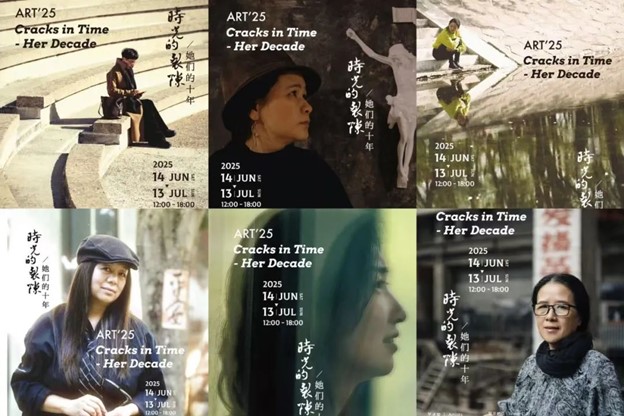Depending on where you live in the world, you may be opening this story with every tree in your neighborhood blushing bright yellow, orange, and red, or you could be wondering why all the colors didn’t show up.
The phenomenon we call fall or autumn is as complex and varied as it is inevitable. Changes in the length of the day, nutrients in the soil, species diversity, moisture and precipitation levels, fluctuations in temperatures, and even atmospheric nitrogen deposition, all drive fall leaf coloration in different ways, not all of which are known and understood by botanists even now.
When conditions are right, autumn leaf displays are among the most beautiful phenomena of nature, but some years, fall can pass by with leaves seemingly going from green to brown, or from green to the ground.
But is there a place on Earth where autumn is the best, or where it’s never skipped over? What does that forest look like, what are the tree species there? What’s the climate like?
“Mt. Asahidake in Hokkaido… holds alpine vegetation and its spatial distribution is quite big compared with other alpine regions in Japan,” says Professor Dai Koide, Senior Researcher at Japan’s National Institute for Environmental Science. “It’s mixed colored canvas with green (dwarf pine Pinus pumila), red (mountain ash, Sorbus matsumurana), and yellow (birch, Betula ermanii, and alder, Alnus maximowiczii) on a wide-scale alpine topography is quite beautiful for me”.
Koide has studied leaf coloration—its variations in brightness, duration, and intensity, in Japan’s northern island of Hokkaido for years. Autumn in Japan is famous—so much so that it was the lure of autumn tourism which cracked the reluctant Japanese government into finally ending their COVID-19 travel restrictions in 2022.
He says that many different parts of Japan have unique or beautiful fall scenery, and any attempt to establish the best would probably be subject to extreme bias from locals; “It’s quite a difficult question”.
“Kyoto is a well-known traditional city in Japan, and its autumn season is strongly colored by red maple and its combination with traditional Japanese temples is also quite a beautiful scene,” he told WaL.
For someone extremely curious about ecological factors that determine autumn’s character, one very quickly reaches the bottom of the barrel of scientific research.
“There are more things that we do not know than the things that we know,” says Simcha Lev-Yadun, Professor Emeritus at the University of Haifa’s Department of Biology and Environment. “When we deal with colorful autumn leaves, we discuss something related to several thousand species. Next week I will sample trees with a molecular biologist in order to progress with one species,” he told WaL.
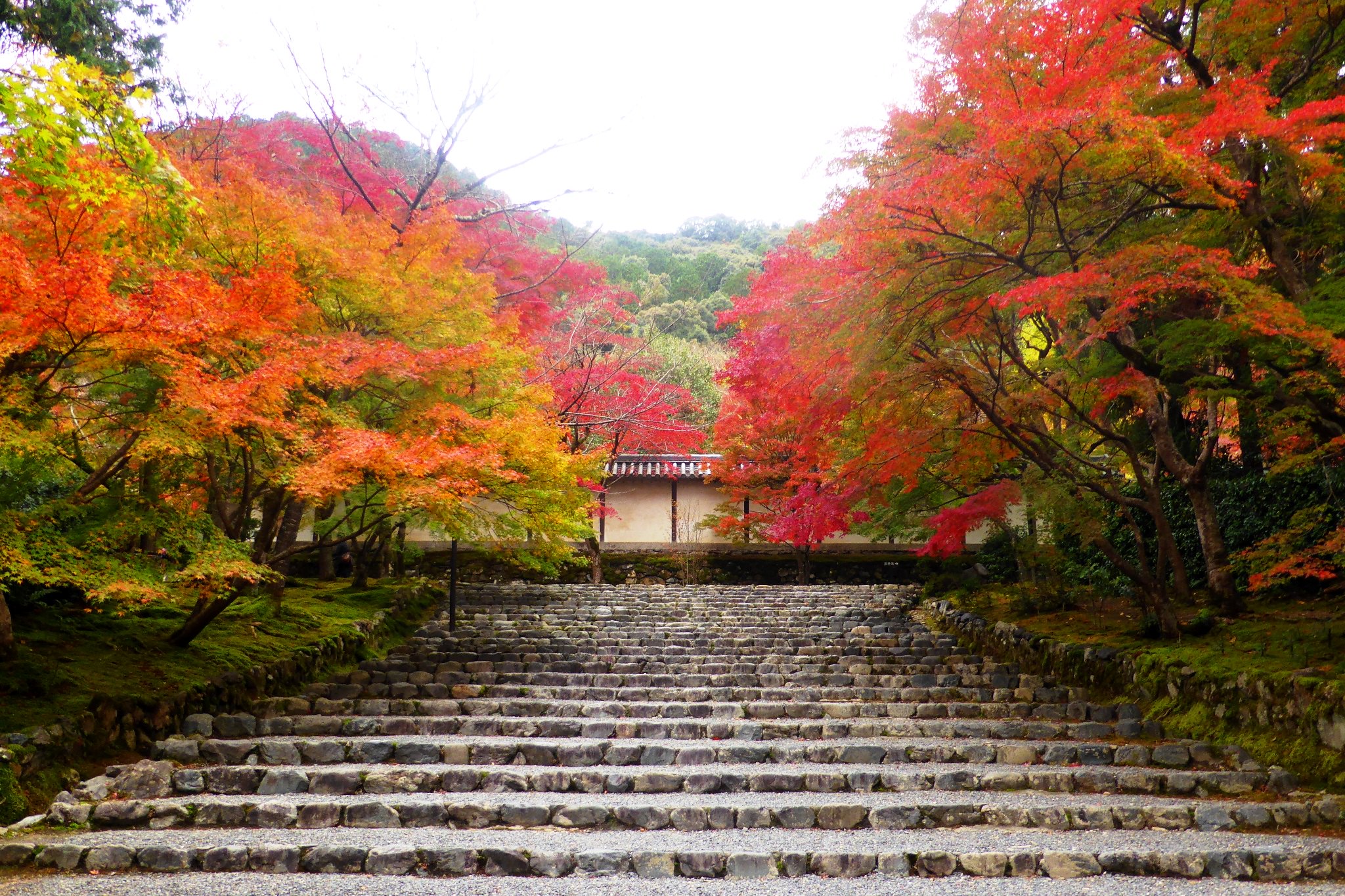
A primer on autumn
Fall is one of mankind’s greatest connections to the world around us—the ultimate sign that the year is winding down, that changes are always at work on the planet, and that the time of plenty has passed. For ancient peoples it was both positive and negative: a time of harvest and marking of the calendar, as well as the starting pistol for the long winter.
Today in the West, it comes with its own ceremony—the advent of the return to school, the opening of hunting seasons, the coming of four holidays in a span of 60 days, of pumpkin spice everything, and perhaps a fall-flavored vacation to admire autumnal forest scenery across the many US national parks that boast world-renowned fall color phasing.
WaL spoke with several researchers who have decades of experience studying the phenology of trees and shrubs in the autumn, and from each corner of the world they crocheted together the picture of a very complex natural event.
Studying how climate change is changing autumn in the US National Parks of Acadia and Shenandoah, Assistant Professor of Geography and Environment at the University of Richmond Dr. Stephanie Spera says that trees’ main cues for changing are temperature and daylight.
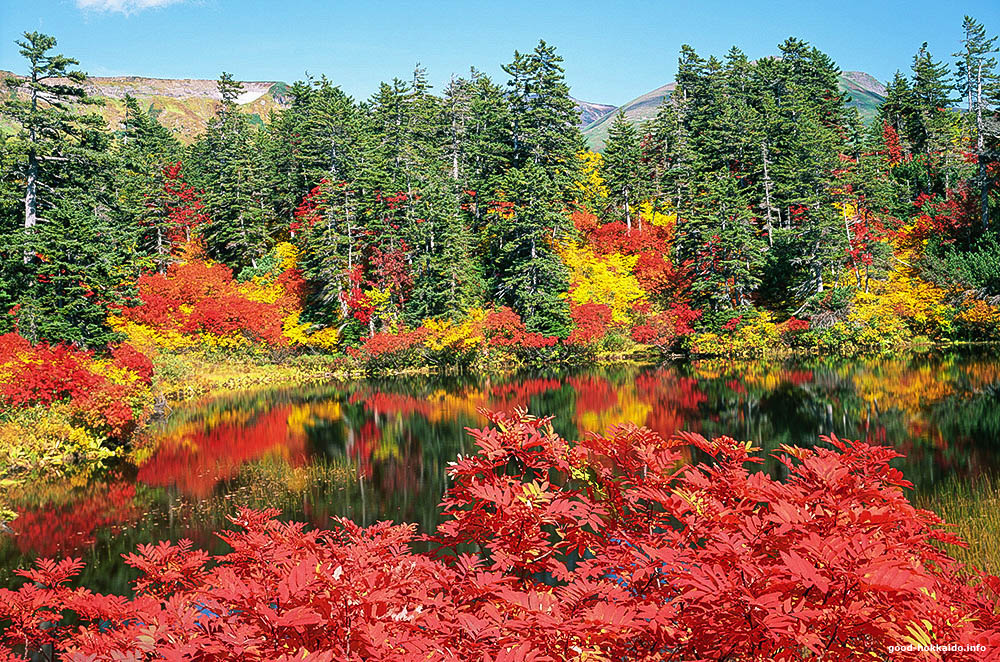
“Acadia is northeastern coast (44.3 north latitude) so Acadia will turn first; less light, and gets colder,” she told WaL. It turns out this is the same in the northern island of Hokkaido—Japan itself stretching from 20 to 45 degrees north latitude—where Professor Koide says autumn already reaches in September “but it reaches October in the central part of the biggest island, Honshu,” he says.
Because the Earth is tilted on its axis, the arrival of September and October heralds not only fewer hours of daylight, but a lower intensity of sunlight that spends more time behind horizon features like hills and mountains. Leaves are green because of chlorophyll, which is key to photosynthesis, but also a pigment that shows green to our eyes. However, it breaks down over not-so-long spans of time if it isn’t being actively replenished by the plant’s nutrient systems.
As a result of this, when the longer nights cause trees to produce a layer of tissue called abscission in the leaves which cuts the leaf off from those systems, the green pigment degrades. Orange, yellow, and brown colors emerge on the leaves as the chlorophyll degrades away; they were always there, and merely remained hidden behind the chlorophyll.
Orange is sometimes attributed to phytonutrients called carotenoids, while yellow is attributed to a group of carotenoids called xanthophylls, however Professor Lev-Yadun says that orange is always a wildcard, and without a chemical test for each species it can’t be known whether orange leaves are that way because of carotenoids, xanthophylls, or a mixture of those two plus the red leaf pigment known as anthocyanin.
The mechanisms that cause some trees to turn red and others yellow are known, but why those mechanisms were developed and what are other factors that can influence them are difficult questions.
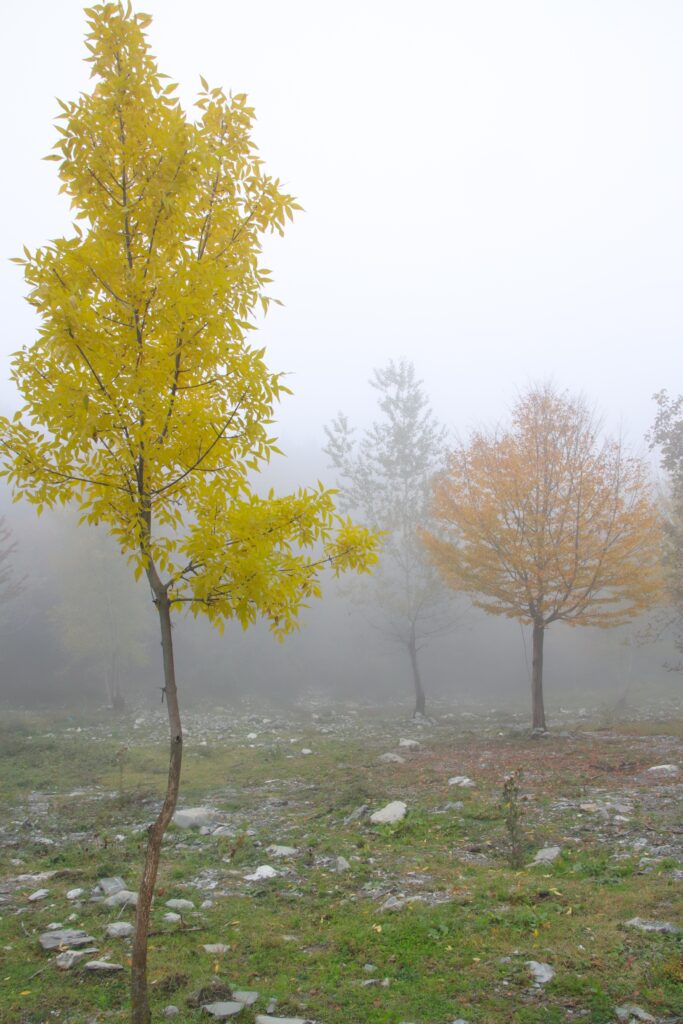
Raking back the curtain
In a review published by Professor Lev-Yadun in 2022, he outlines the currently accepted theories for why yellow leaves dominate fallscapes of Europe and Western Asia compared to East Asia and North America where red leaves are more common. Lev-Yadun interprets the state of the evidence as showing that red pigment—created by anthocyanins—is anti-herbivory in nature and is visible in plants in the autumn as a sign that the plant is defending itself from herbivorous insects.
These herbivorous insects and their prey species could travel south to the equator during the last Ice Age because mountain ranges in East Asia and North America run north to south. This pressure, he writes, “resulted in the preservation of many ancient Tertiary floral and faunal elements there,” compared with Europe where species were trapped between the advancing ice and the major ranges of the Alps and Carpathians which run west to east. As a result, extinction rates of flora and fauna were much higher in Europe, which was reflected in the number of endemic tree species that survived, and the relative lack of red pigment in the endemic flora species.
“In Finland, the phenomenon of yellow autumn leaves is called ‘Rushka’, and it is very different from what is known from the Eastern USA and East Asia,” writes Lev-Yadun in his paper. “The yellow-gold Rushka belt at its height shifts gradually from the north to the south of Finland in about 2–3 weeks and is visually incredible. Two golden walls of millions of trees with bright yellow-or gold-colored leaves seen along the roads”.
Indeed the dominance of yellow in Scandinavia from the Poplus and Betula genera is almost total. There are only four indigenous tree species with red autumn leaves in Northern Europe (Prunus padus, Prunus spinosa, Sorbus aucuparia, and Acer platanoides) and 24 on the continent as a whole. By contrast, there are 89 such species endemic to North America and 152 in East Asia.
As I walked through the forests of the southernmost slopes of the Caucasus mountains, in Azerbaijan, I didn’t know to think about it at the time—that there was a lack of red trees and a variety of red shrubs. Peak fall comes in mid-late October, between the 16th and the 25th—it being around the same latitude as Acadia and Hokkaido.
Support for this theory of the origin of red leaf coloration in the autumn comes from the fact that red leaves dominate non-evergreen shrub species in Scandinavia preyed upon by insects.
“Under the snow cover the insects do not die because it is a natural igloo, while the trees emerge above the snow cover and they and the insect eggs are exposed to
very low temperatures and therefore the insects die,” Professor Lev-Yadun told WaL in an email. He has also done research himself that shows many species in Finland, Japan, and Israel that have red leaves in spring have red leaves in the autumn as well, further supporting the idea that anthocyanins are for insect defense.
Perhaps it’s a coincidence, but one of the worst invasive pests in Europe for fruit-bearing shrubs and trees like grape vines, blueberry bushes, stonefruit trees, apples, and pears, is the Popillia japonica beetle—and comes from Japan.
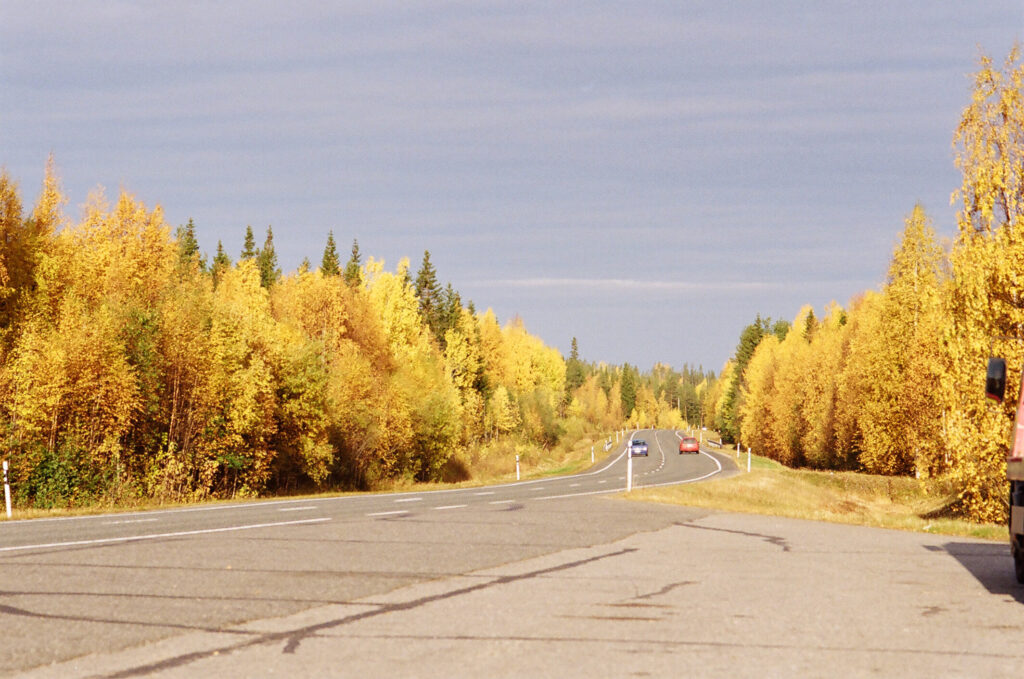
Each its own story
Japan is famous for this kind of red display, particularly among maple trees—a feature it shares with Acadia.
“Acadia (a much smaller national park (190 km2)… you have a lot of different plant species, including cool coastal scrub and their famous wild blueberry bushes which turn a bright red in the fall,” says Dr. Spera.
Spera has found over 30 years of studying climate change and autumn that it’s like the whole natural cycle is shifting later.
“What we’ve found is that in the early 1950s, peak fall foliage was occurring around October 4-6, now, on average, it’s about the 14/15, with some years even later. So overall, the season is shifting later and later—thanks, mostly in part, to warming temperatures—particularly in September. But, the other interesting thing that’s happening, particularly in the last 20 years, is really that the timing of the whole season is becoming more and more unpredictable because the climate is shifting,” she says.
May rainfall, her research has shown, is directly correlated with an earlier autumn in Acadia. Professor Koide spends more of his time researching variations in color brightness and says that in Hokkaido, it’s the date of the spring “green-up day” that matters.
“For alpine regions, spring phenology (green-up day) seems to affect the autumn color brightness through the limit of the leaf life span; earlier spring would cause earlier senescence,” he told WaL in an email.
“Color brightness is a recently approached topic and its data are still limited,” he said, explaining his work on the alpine tree Sorbus matsumurana. “In the alpine region, I found a correlation between autumn color brightness and green-up day. The late green-up year showed a brighter red color. I guess that the effect of leaf life span occurs for the early green-up year, and decreased physiological activity in autumn would reduce the biosynthesis of anthocyanin”.
Soil conditions matter as well, as do anthropogenic effects. A 2013 study in the Adirondacks of New York found that atmospheric nitrogen deposition, such as can be accelerated from mass automobile use, leads to dimmer colors in sugar maples, along with a general decline in canopy robustness and growth rate.
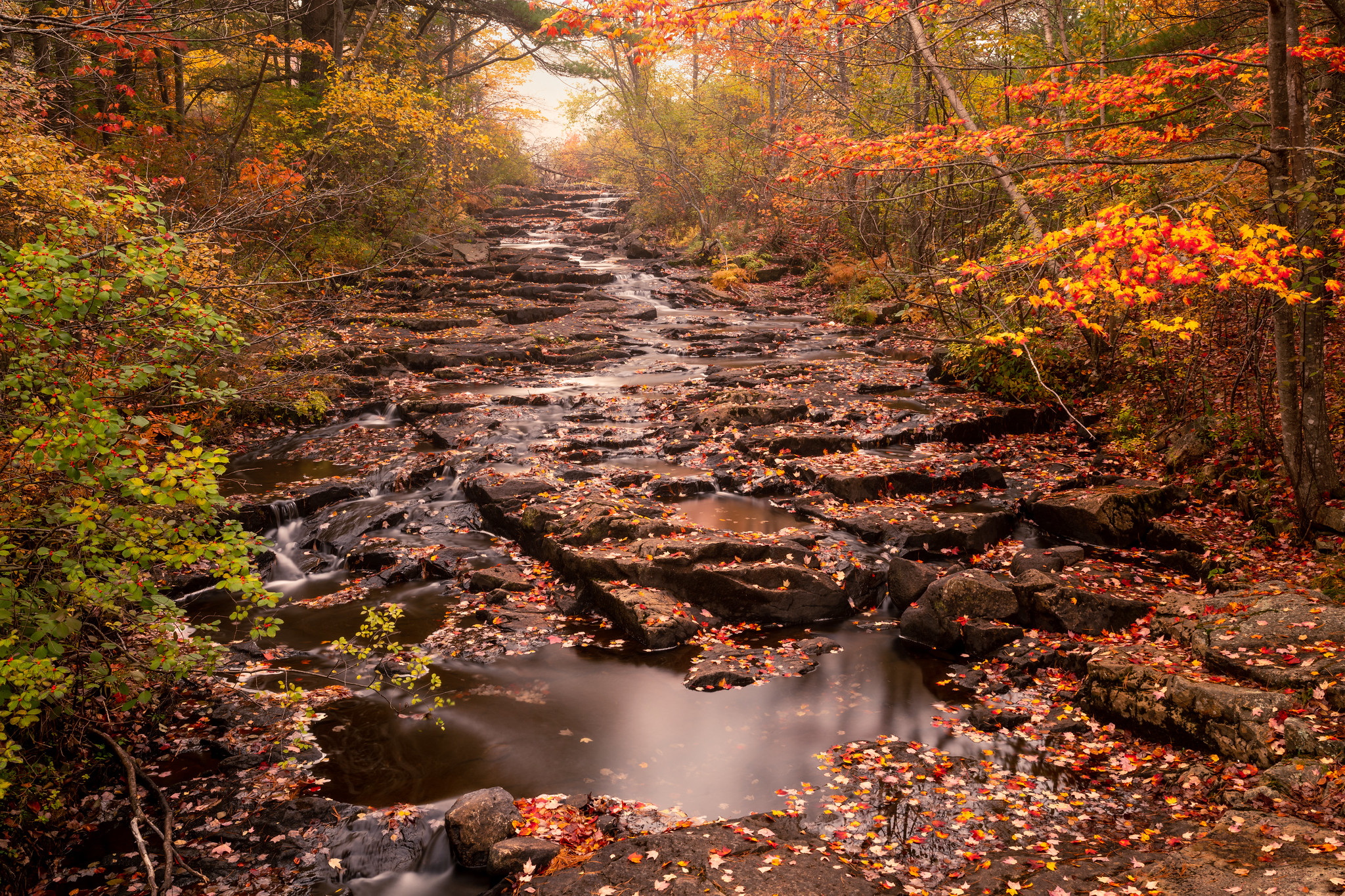
What would make a perfect fall?
A keen observer of nature might note a short checklist of features starting in springtime that would clue them in as to the quality of the “leaf-peeping,” as it’s called in the United States, to come.
While Koide found importance in the timing of the first spring leaves in the Japanese alpine reaches, when studying in Acadia Dr. Spera did not. She found a correlation instead with rainfall in spring. Perhaps for the purposes of creating a checklist, it would be to take notice after an early spring and a wet May.
Sunlight is not disputed, however. Sunny days, especially in late summer, are strong drivers of color in the fall. The sunlight causes the diminishing chlorophyll to be used up faster.
“So the best fall color comes when you’ve had a moist summer but not a sopping wet summer, followed by a fairly dry fall where you have cool nights but non-freezing nights and then warm days that are clear and sunny,” says Wendy Cass, a botanist and Ranger at Shenandoah National Park, a region in the Virginia Appalachian Mountains famous for late-fall coloration.
This is especially true because the pigments of yellow, orange, and brown are part of the leaf’s defense strategy; “stress conditions such as excess warmth, radiation, and drought seem to affect the amount of carotenoid (the yellow pigment), which has a function to reduce such stresses,” says Professor Koide.
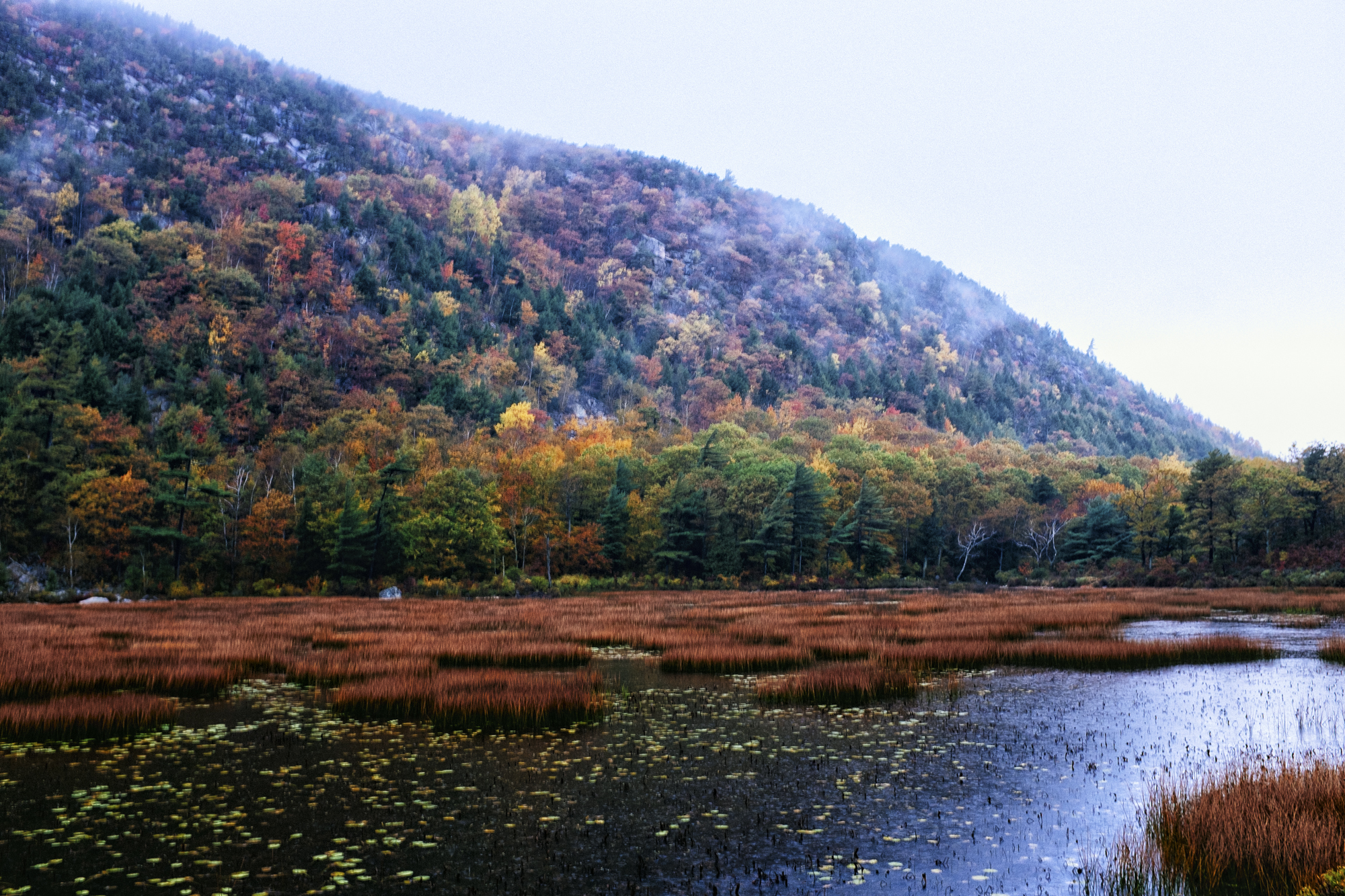
If that’s what your year has looked like, head to a temperate region at between 41 to 45 degrees north latitude in a dry patch of weather in mid-late October for the best show. The upper part of these coordinates runs through some enticing destinations like Aquitaine, France, famous for fall foliage displays coincidently, and Dr. Koide’s haunt of Hokkaido, while the lower end passes through Spera’s Acadia National Park and the Caucasus highway in Azerbaijan, where this author took some of the photographs seen here.
But these are just suggestions, as all the researchers were quick to admit that beauty in fall, whether it’s the color brightness or variance, will be a matter of personal opinion.
“A strong red-color-only scene may attract somebody but the other person would select a mixture-color scene,” said Professor Koide. “How humans feel beauty should be also approached to solve this problem”.
“I also, subjectively, just think having topography, water, coast, and pine forest along with these colors, which in Maine—for example has low-lying bushes that turn scarlet, to yellows and oranges of birches, beeches, and maples, are just more fun and exciting than the mostly deciduously colored oranges and browns of rolling hills/mountains you see when hiking in the Blue Ridge Mountains,” said Dr. Spera. “But, I assume this is because I see life through the lens of a New Englander, and that place and space is very important to me”. WaL
